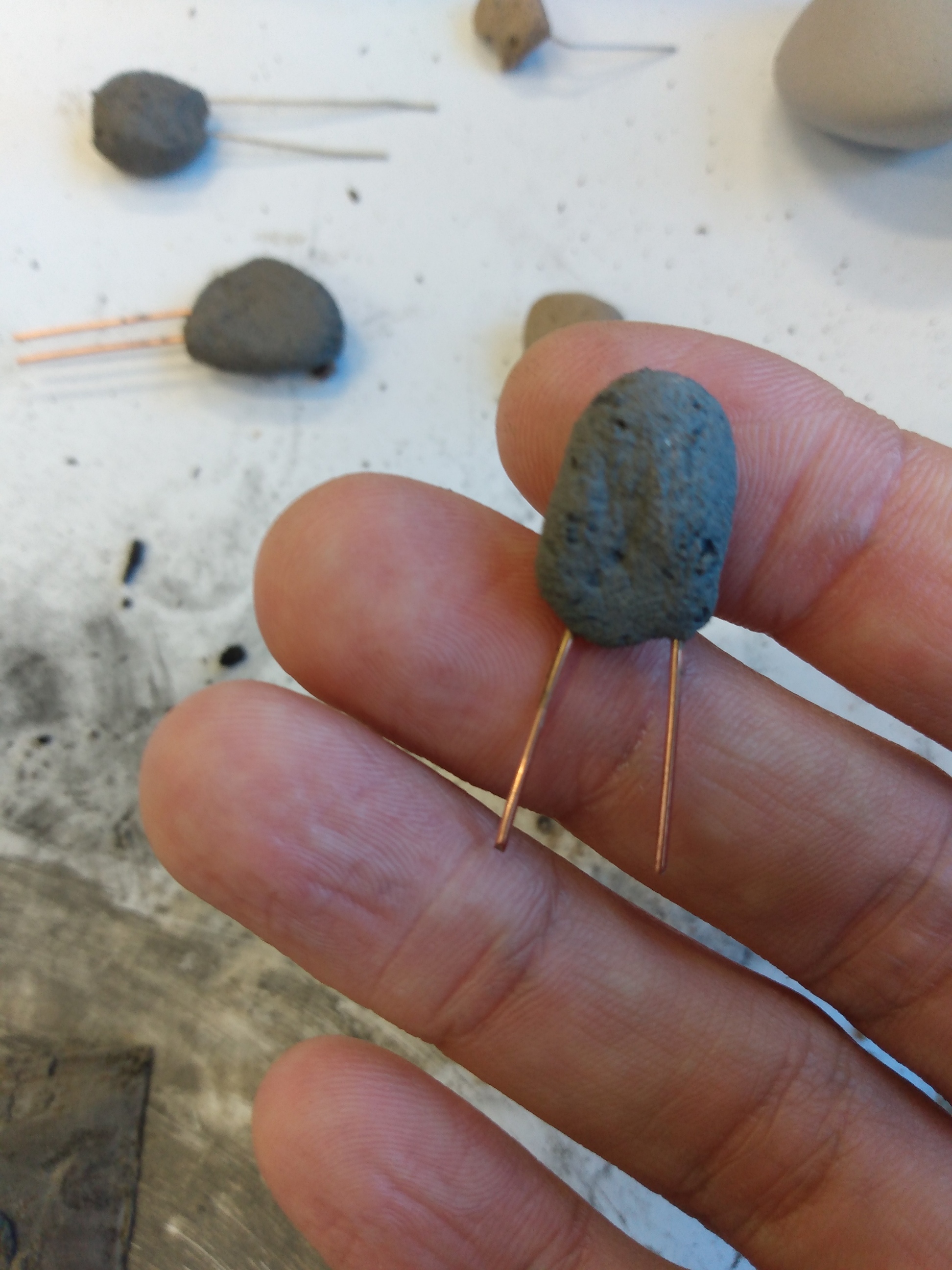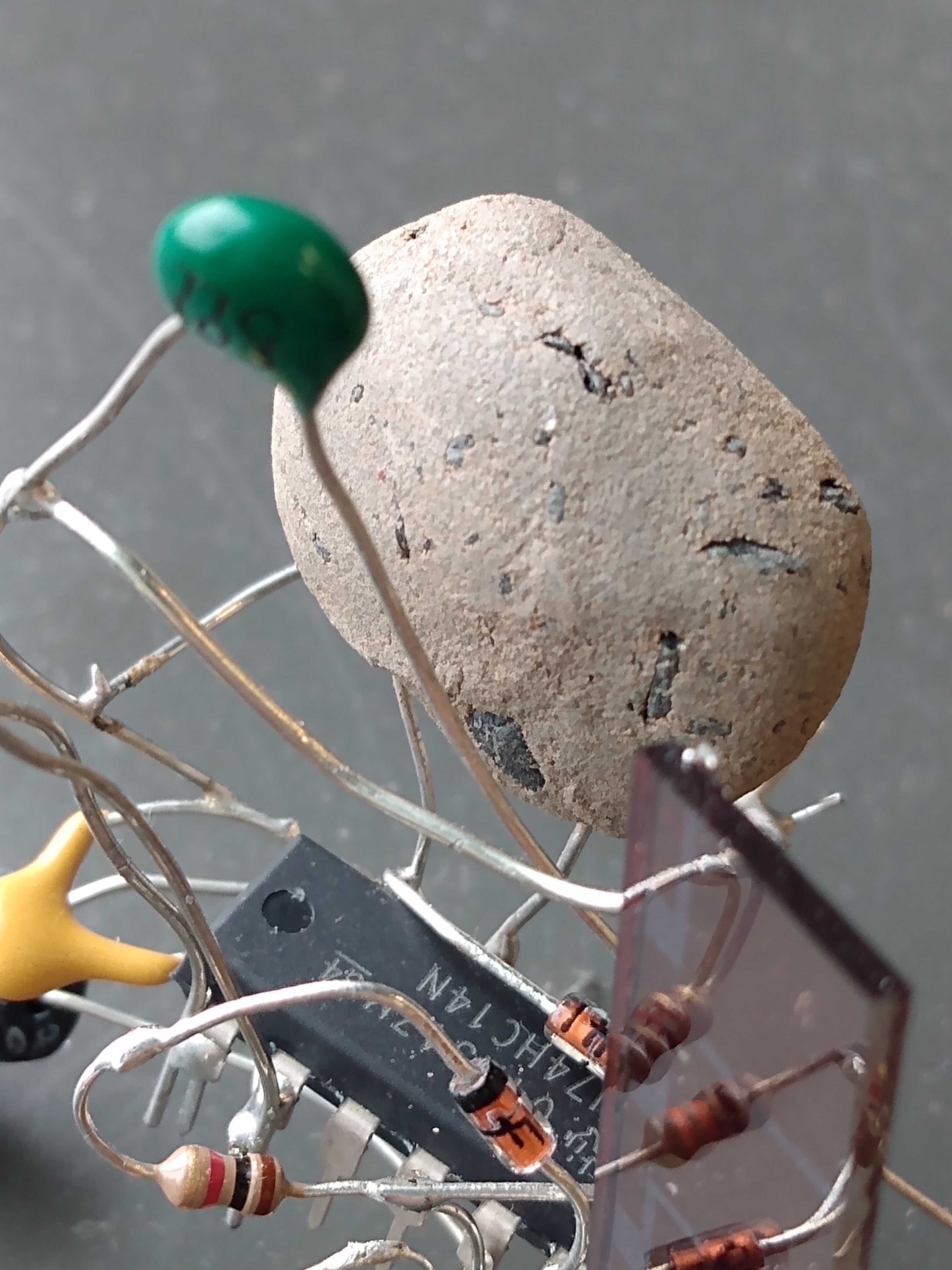After two years, I am finally updating some my studies.
Here I will post on my exploration of handmade component - resistor. Starting with the question “could I use anything if the material resist?” Resistor provides precise amount of resistance to the circuit, controlling the flow. As the word “resistor” describes, things that resist.
As I work with the design of circuits for each bugs, these elemental materials become symbols. Symbols that represent the material quality. This abstraction allow me to focus and conceptualize the relationships made in a particular scale. Material disappears and only shapes remain - to be able to see the entire forest.
But there is always a gap between symbols and materials. Idea and actuality. Recipes and cooked food. Words and feelings. There is a song by a band called くるり quruli that is “言葉はさんかく こころは四角” which translates to “words are triangle, feelings are square” there will always be a gap. There is something about working with circuits, (maybe partly because my lack in depth in technical knowledge) it is a process of seeing this difference between idea and materiality. It reminds me that there is always the unknown left lurking. Infinite granular variables that can’t be captured. Platonic ιδέα、idea cannot exist. We are just left with the noise. The gap.
Many resistors use carbon as the main material to provide the specified value of resistance. Carbon is a semiconducting material whose conductivity can be controlled by mixing it with other materials. In the early 20th century resistors were made with carbon and ceramic and resin (maybe still the case?). I had a wood charcoal from a fireplace that I crushed up mixed with acquired powered charcoal for carbon, and clay harvested from the Eastern Shore of Maryland. I kneaded it like bread. I put the mixture on two copper wires a few millimeters apart. After it was dry, I checked the resistance. They ranged from 80K ohms to 600K ohms. Some iterations with too little carbon did not conduct at all.

I have implemented these handmade resistors to number of bugs, and grouped under the name “clay”.
Bugs that has this resistors that are logged are so far, Bon, chirpy, nanashi_sateraito, and lucasisto.

Something I have noticed. The resistance of these resistors has been changing over time, it seems depends on the humidity? Exposed clay may be sensitive to the moisture and temperature of the air. This is just a hunch but might be worth experimenting more.